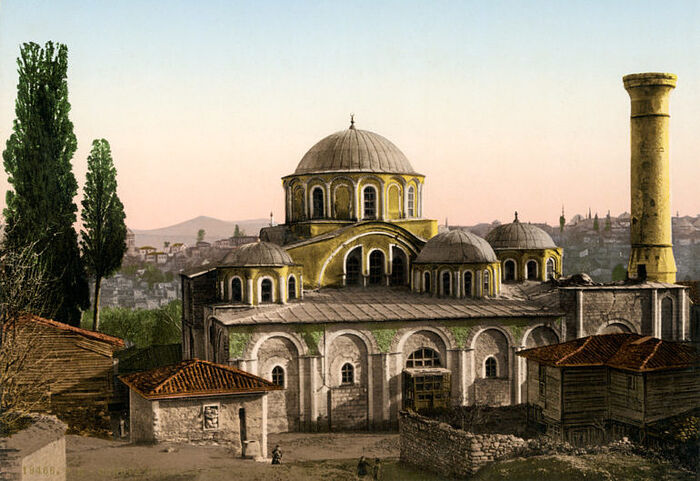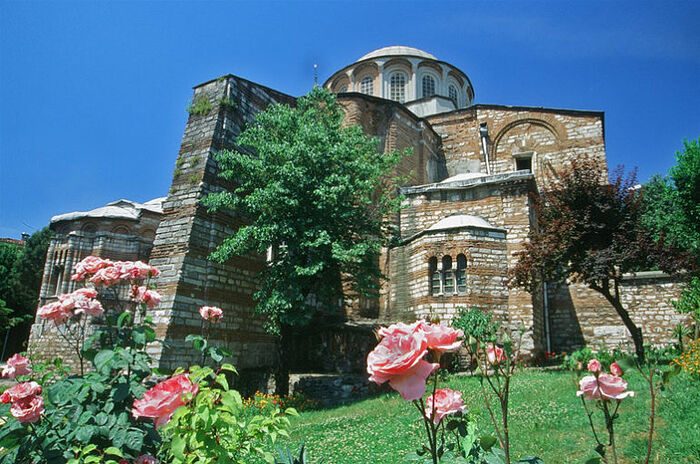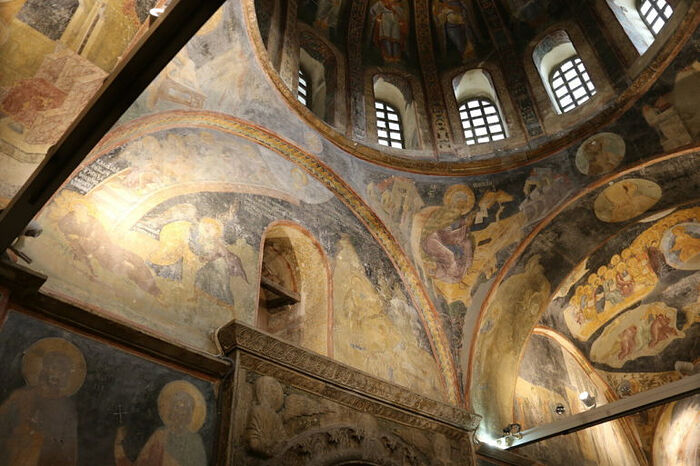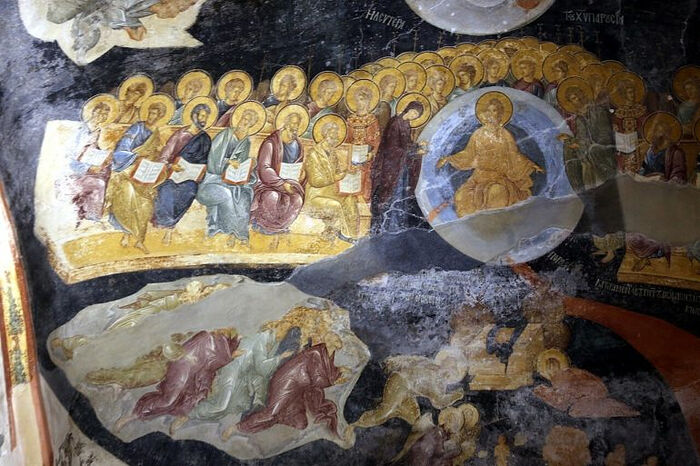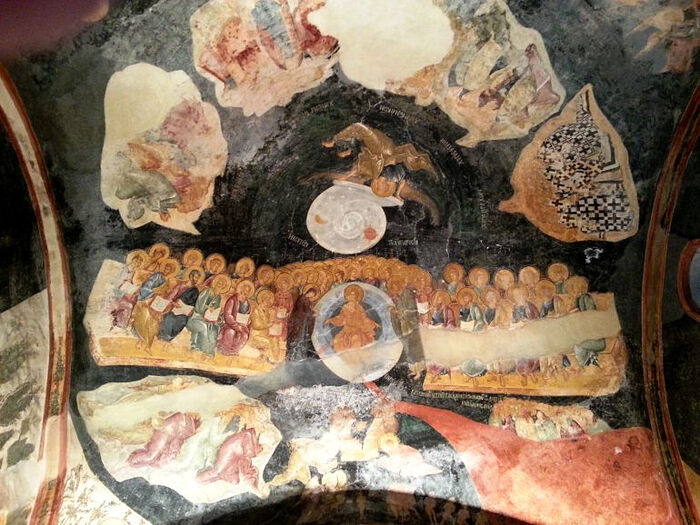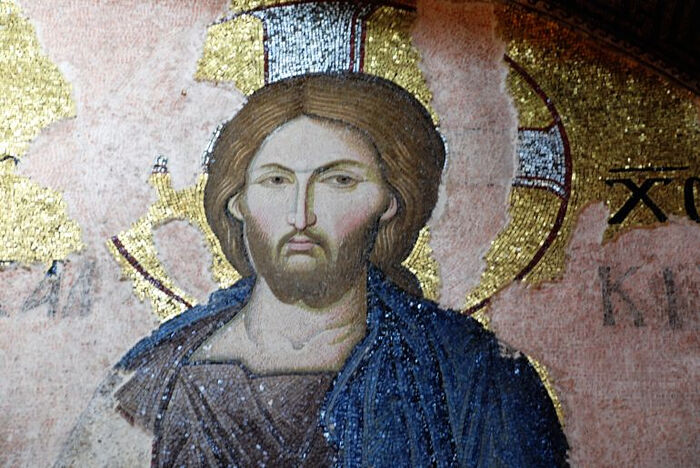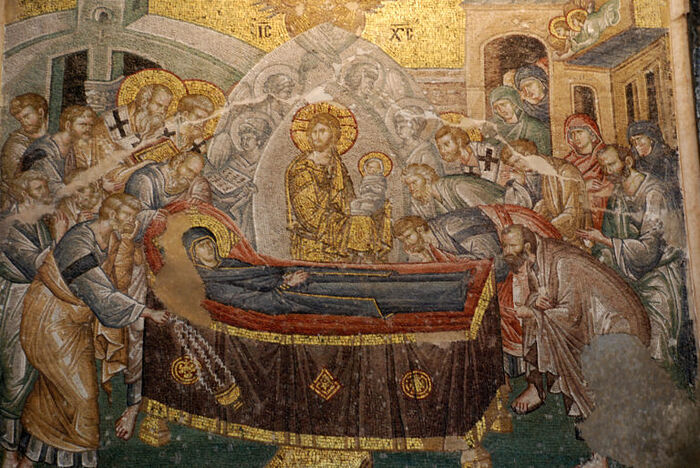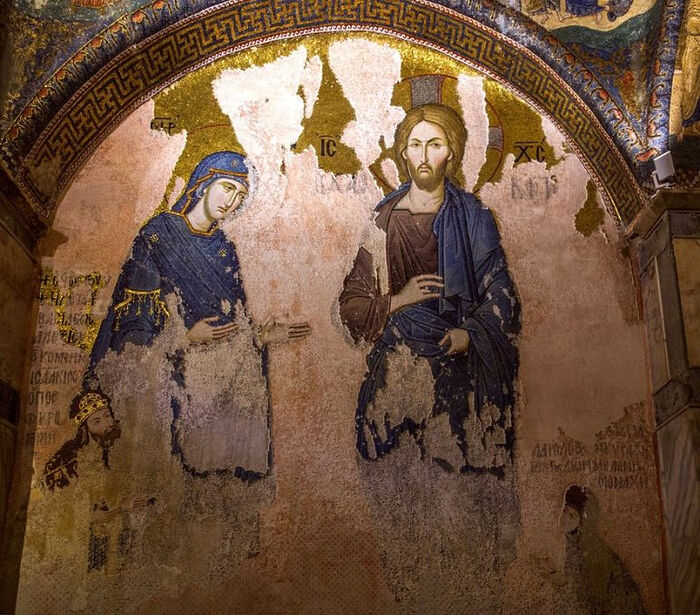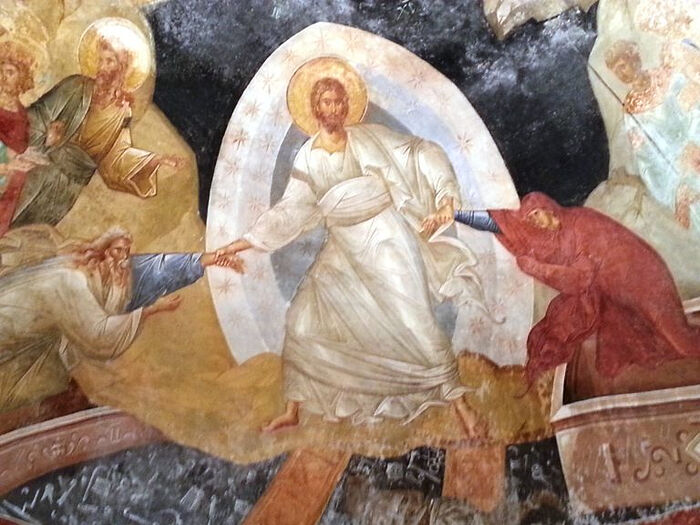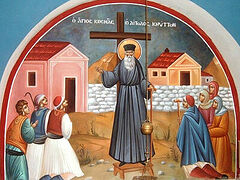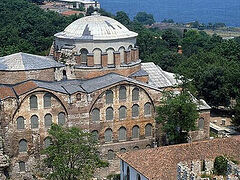Half a century after the invasion of Constantinople by the Ottomans in 1453 Chora Monastery with the Church of Christ the Savior was converted into a mosque (Kahryie Cami). Some of its frescos and mosaics were whitewashed over and some smashed.
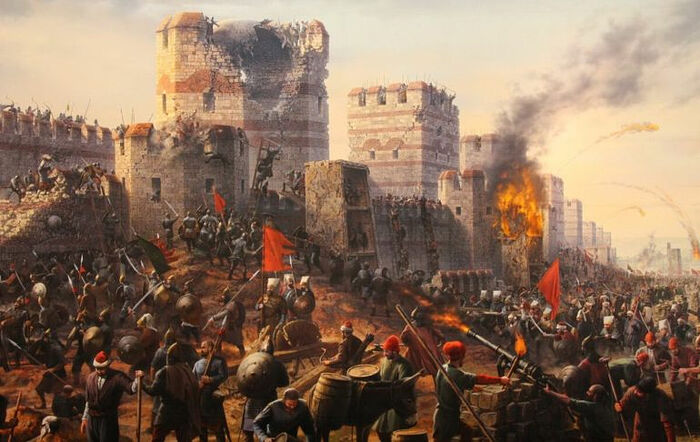 The capture of Constantinople by the Ottomans.
The capture of Constantinople by the Ottomans.
In 1945, the mosque was turned into the Kahriye Museum. Its mosaics and frescos were restored and all visitors could admire them. In November 2019, Turkey’s Highest Administrative Court ruled that the Cabinet of Ministers’ decision to close it as a mosque and designate it as a museum had been unlawful. And last month the President of Turkey signed a decree to reopen this Istanbul museum as a house for Muslim worship.
Alexei Lidov, a Russian art historian and Byzantine scholar, speaks about the uniqueness of this museum and why it is important not only for Christendom.
Second in renown only to Hagia Sophia
Chora Monastery is one of the most significant monuments of Byzantine art. For Christendom it is second only in importance to the Hagia Sophia Church in Constantinople. The monastery was founded in the eleventh century, rebuilt in the twelfth century, and the fabric of the present building mostly dates from 1315–1321.
This unique museum of Byzantine mosaics and frescos was created in the early fourteenth century under the Palaiologos Dynasty. It was commissioned by Theodore Metochites, the outstanding Personal Adviser (Mesazon) to Emperor Andronikos II Palaiologos (to put it into the modern-day reality, the position was like the Prime Minister). One of the most erudite figures of his age, a theologian and an author, Theodore Metochites invited the most skilled craftsmen of Constantinople to decorate this church.
 Theodore Metochites presents the renovated Chora church to Christ. Photo: Alexei Lidov.
Theodore Metochites presents the renovated Chora church to Christ. Photo: Alexei Lidov.
The Church of Christ the Savior of Chora Monastery is also one of the most important UNESCO Heritage Sites.
The church defended the honor of the Greek craftsmen
The church mosaics and frescos were crudely whitewashed over after the fall of Constantinople when the temple was converted into a mosque. When some of the mosaics and frescos were uncovered from beneath the layer of Turkish plaster in the nineteenth century, researchers couldn’t believe that they had been created by Greek craftsmen. At that time, Greek medieval art was believed to be derivative, so the mosaics were attributed to some unknown Italian craftsmen. But the reality was just the opposite: it was Byzantine art that influenced the Proto-Renaissance in Italian art, for which it (Byzantine art) was the unattainable height.
Chora as a name of God
Guide-books (including popular science books) refer to this monastery as to “the Monastery of Christ the Savior at Chora” and explain that “Chora” denotes the location beyond the old city boundaries by the new walls and means “in the fields”. But, in my view, the name “Chora” indicates the dedication of the monastery to Christ, and not its location—“Chora” is one of the sacred names of the Second Person of the Holy Trinity and means “the Divine space”. In other words, it is the same type of dedication as the Church of Hagia Sophia, the Wisdom of God, (that is, Christ as the Logos) and the Church of Hagia Irene (in honor of Christ as “Peace” and not Great-Martyr Irene) nearby.
The church owes its unique name to the same Theodore Metochites, who rebuilt and adorned it and whose portrait can be seen above its main entrance. It is a large composition, in which the ktetor (meaning the “founder”, the “patron”) Theodore Metochites is depicted on his knees before the enthroned Christ, presenting the model of his church to Him. The main images of Christ above the entrance to the narthex and to the left of the altar bear a very rare inscription: “Jesus Christ Chora ton zonton”—that is, “Christ, the land of the living.” “Chora” can also be found in three images of the Theotokos with the Infant Christ, situated on the central axis of movement towards the altar, reading, “Chōra tou Achōrētou”—that is, “the Container of the Uncontainable.” Thus Theodore Metochites gives us a complex yet clear clue to understanding the whole iconographic plan and the theological thought behind it.
The finest mosaics in the world
Perhaps this church contains some of the best mosaic compositions in the world. If we take all the mosaics of all traditions and periods, the mosaics of Chora Monastery would rank among the first in terms of artistic perfection.
The best preserved mosaics can be found in two porches: the exonarthex (the external, open porch) and the inner narthex. The theme of the mosaic compositions is the childhood and adolescence of Christ and the Theotokos.
The majority of the mosaics were destroyed
Unfortunately, there are not very many mosaics in the church nave—almost all of them were smashed after it had been converted into a mosque. All that remains there are three compositions of Christ and the Mother of God with inscriptions on either side of the altar, along with a perfectly preserved composition of the Dormition of the Theotokos on the west wall. We can only imagine how beautiful the other (barbarously destroyed) mosaics must have been.
A depiction of the Byzantine princess who lived in the Mongolian court
There is a unique Deisis among the mosaics, which consists of only two figures: Christ shown as standing and the Virgin Mary as interceding for the mankind. Depicted at Their feet are the historical patrons of the church who had supported it before Theodore Metochites took it upon himself to reconstruct and redecorate it. It also depicts John Komnenos, a member of the imperial family who rebuilt it in the twelfth century; and Maria Despina of Mongolia (the thirteenth century), a Byzantine princess who ended up at the Mongolian court as the wife of one of its khans but later returned to Constantinople, took the veil and became an outstanding figure of Byzantine Orthodoxy of her age.
The Virgin Mary’s first steps
The Chora church is also famous for its series of mosaics that depict the childhood of Christ and the Theotokos in detail. Among the compositions are the first steps of the Theotokos, the Nativity of Christ, the Flight into Egypt, Joseph’s farewell to Mary (when he wanted to call off their wedding), the dream of Joseph; And, lastly, there is a very rare scene featuring the census that took place under Herod and is mentioned by the Evangelists.
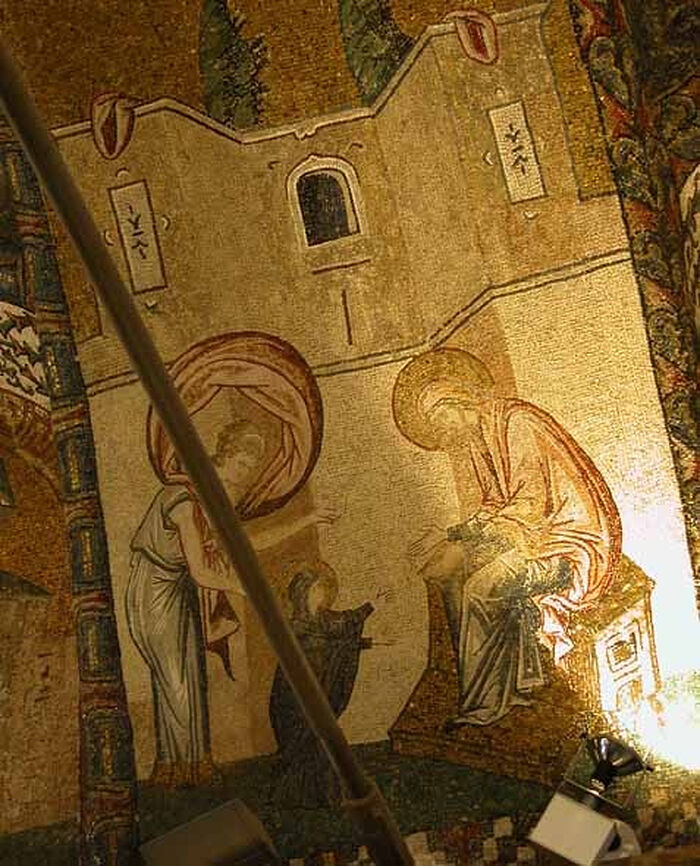 The Virgin Mary's first steps.
The Virgin Mary's first steps.
Awaiting the Second Coming
Among other unique important gems are the fully preserved frescos in the south side-chapel (parecclesion), which was used as the burial area for the monastery’s patrons, including Theodore Metochites. The subjects of the frescos focus on the Resurrection, the Second Coming of Christ; hence the famous fresco, “The Harrowing of Hell” in the altar which represents the future Resurrection. There is also a detailed composition of the Last Judgment, along with images of great Orthodox hymnographers, such as Sts. John Damascene and Cosmas of Maiuma, depicted in the pendentives of one of the parecclesion’s domes like the Evangelists because they composed divinely inspired hymns in praise of Christ and His Most Pure Mother.
The major scholarly work on Chora Monastery consists of four large volumes, the contents of which are impossible to relate in this article. But the study of this unique ensemble continues from the perspective of archeology, iconography and the specifics of the style and organization of the sacred space. It hurts us to realize that now this extremely interesting research will be hindered, if not stopped, in this new mosque into which the church has been pointlessly converted.
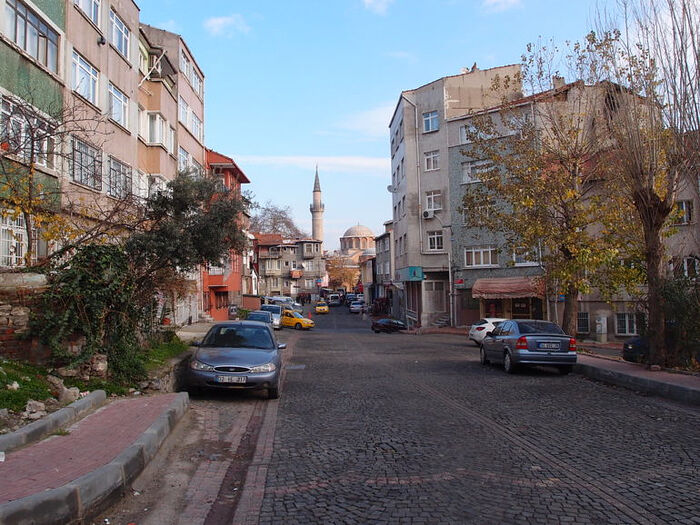 The Instanbul Fatikh, where what is now the Kahryie Cami mosque is located. Photo: Guilhem Vellut.
The Instanbul Fatikh, where what is now the Kahryie Cami mosque is located. Photo: Guilhem Vellut.


